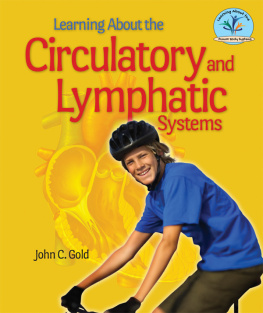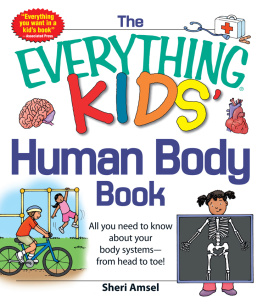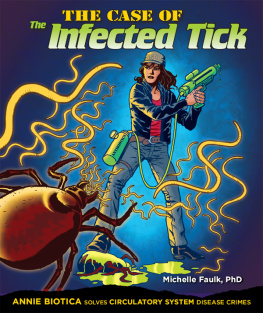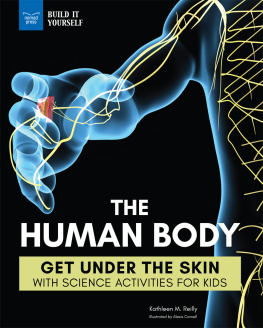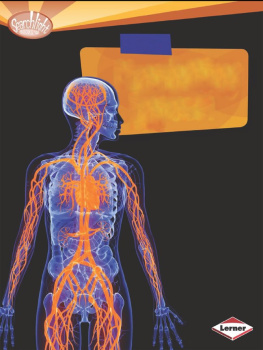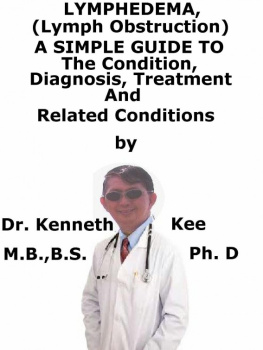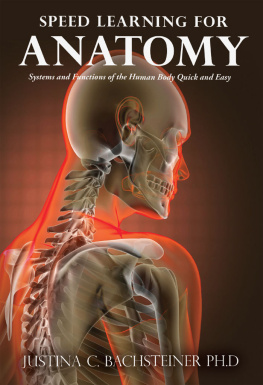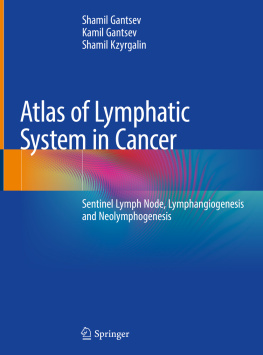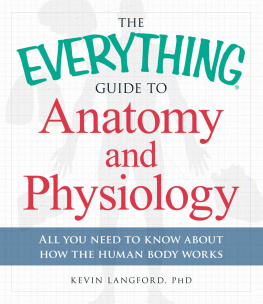Working Together to Keep Us Alive
The circulatory system runs through the body carrying oxygen and nutrients to our cells and removing waste. It is driven by the never-resting heart, which pumps blood through more than 60,000 miles of arteries and veins. The lymphatic system regulates the amount of liquid in the body. Learn how, together, these two systems help the body fight invading bacteria and viruses.
About the Author
John C. Gold is a graduate of the University of New Hampshires zoology and journalism programs. He has written several other health-related childrens books, including Heart Disease, Cancer, and Cerebral Palsy.

Image Credit: Life Art, Williams & Wilkins
Think of the human body as a city bustling with highly coordinated activity. Within this city are many different systems, or service areas. Each of these areas has a specific job that is critical to the survival of the city.
For example, the bodys skeleton creates the shape or structure. The muscles make the body move. The digestive system turns food into fuel that the bodys parts can use to perform their tasks. The brain controls the whole show, and the skin provides protection for everything inside.
But in order for all these systems to do their job, they must have nutrients. They must have oxygen. And theyve got to be able to get rid of the waste they create while doing their jobs.
Just like a giant highway, the circulatory system brings oxygen and nutrients to the bodys parts and removes waste products. The systems roadsa network of tubes called vesselsextend to every part of the body. These vessels carry blood and other liquids. The delivery trucksblood cellscarry oxygen to every part of the body. The blood cells also remove waste products.
A picture of the circulatory system looks like a street map of a city. There are many types and sizes of vessels. The largest vessels lie in the center of the body. As the vessels extend to other parts of the body, they grow smaller and smaller.

Image Credit: Life Art, Williams & Wilkins
The circulatory system runs through the body like a system of roads. At the center, the heart provides the power for the system.
Vessels take blood from the center of the body. Other vessels bring the blood back to the center of the body. A pump called the heart moves the blood.
Another network of vessels, the lymphatic system, helps control the amount of liquid in the body.
This is the story of the heart, its vessels, and the lymphatic system and how they work together to keep us alive.
The circulatory system has three major parts:
1) a network of vessels that reach out to every part of the body;
2) blood and other fluids that circulate in the vessels (these fluids carry oxygen and fuel to the cells and remove waste products); and
3) the heart, a pump that moves these fluids through the network of vessels.
Blood vessels are tubes with several different layers. These layers give the tubes great strength and also allow them to stretch as pressure in them grows and shrinks with every heartbeat. The inside layer, called the tunica intima, is made of flat, very smooth cells. These help the blood flow smoothly through the vessel. The middle layer is the thickest and strongest. This is called the tunica media. The outside layer is called the tunica adventitia. This layer contains nerves and tiny blood vessels that bring oxygen and nutrients to the larger blood vessel.
There are two major kinds of blood vessels: arteries and veins. Arteries are the largest and strongest. They carry blood away from the heart to all the cells in the rest of the body. This blood is loaded with oxygen and nutrients that the cells need. Arteries must be strong because they receive blood that is pumped directly from the heart. The force of the blood causes the artery to expand, just like a bicycle tire does when air is pumped into it.
The arteries nearest the heart are the largest. The aorta, which is attached to the heart, is the largest blood vessel in the body. It is about one inch in diameter.
By the time an artery reaches the end of its route, it has become very, very small. Its three layers have become a single layer of cells. These tiny vessels are called capillaries. Capillaries look like a very fine net. Their thin walls allow oxygen and nutrients in the blood to flow out of the vessel and into nearby cells. The thin walls also allow waste products from the cells to flow into the vessels.
Once the blood has delivered oxygen and nutrients to the cells and picked up waste products, it passes through the capillaries into the veins. Veins are not as strong as arteries because they do not receive the full force of blood being pumped by the heart. The veins carry the blood back to the heart and the lungs.
Veins have valves that help keep the blood moving toward the heart in a one-way circuit. These valves prevent the blood from flowing backward.
If blood vessels are the bodys highway, then blood cells are the trucks that travel the road. These cells help transport oxygen to other cells. They also provide protection from invaders and help repair damage to the circulatory system.
There are three kinds of blood cells. The most numerous are red blood cells, known as erythrocytes. There are 25 trillion erythrocytes in the body. Red blood cells live between 80 to 120 days. When they die, new cells made in the bone marrow replace them. Bone marrow is living material inside the bone.

Image Credit: Life Art, Williams & Wilkins
BLOOD CELLS
Red blood cells are important because they carry oxygen to other cells. They do this with the help of a protein called hemoglobin. This protein contains iron and can capture tiny particles, or molecules, of oxygen. Hemoglobin proteins that contain oxygen make red blood cells red. When hemoglobin molecules dont contain oxygen, red blood cells are blue. This is why veins look blue, because they are carrying blood that doesnt have any oxygenit has already been delivered to the bodys cells.
White blood cells detect and fight viruses, bacteria, and other foreign invaders. There are several kinds of white blood cells, each with a different task. Some types attack foreign invaders such as bacteria and viruses by surrounding and digesting them. Other white blood cells clean up dead or damaged body cells.
Still another kind of white blood cell makes proteins that help the body remember infections it has fought in the past. These proteins, called antibodies, let the body respond more quickly when the same infection enters the body again. Some white blood cells leave the circulatory system to help other parts of the body fight infections. White blood cells live from a few days to a few months.
The third kind of blood cells are platelets, also called

